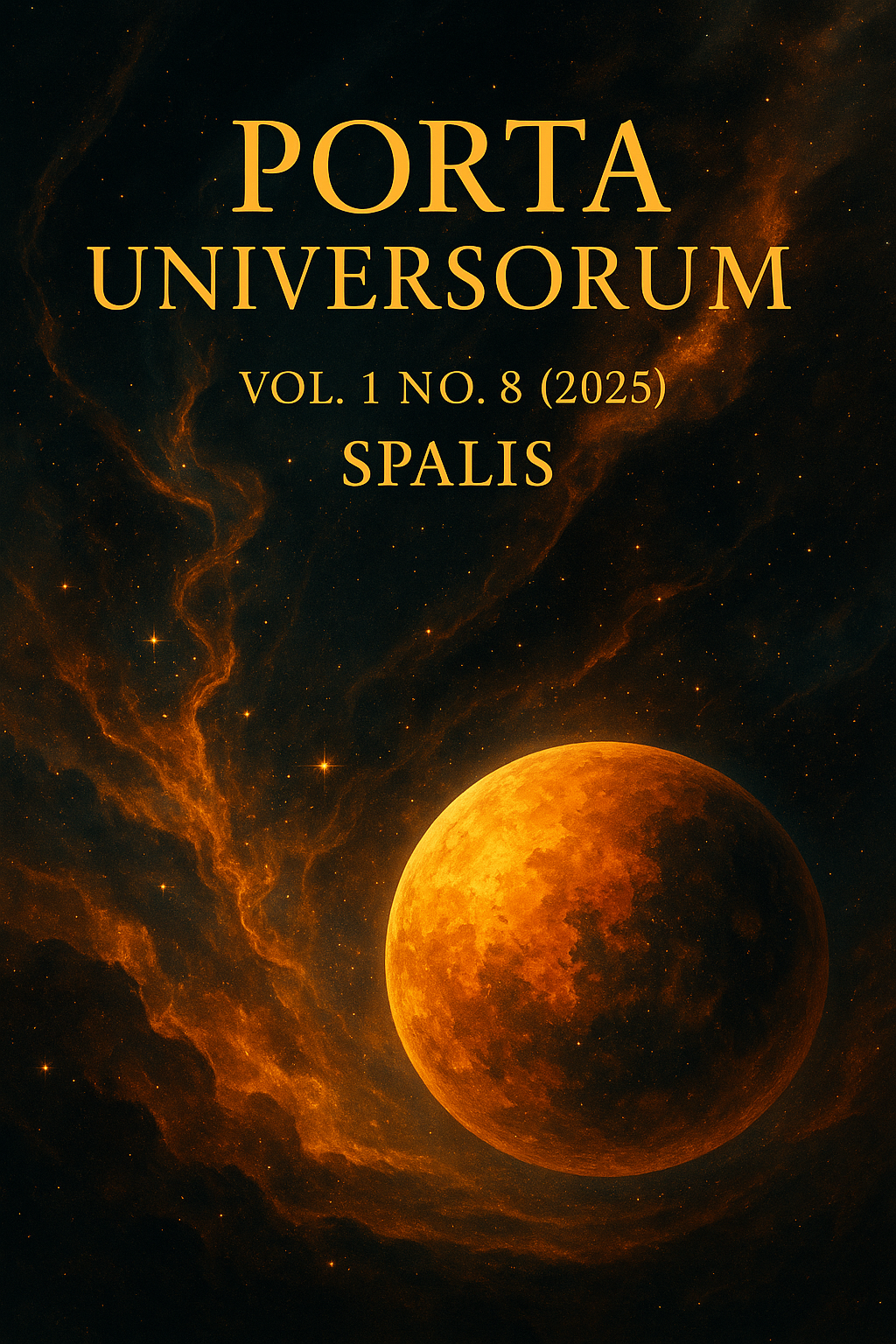From Alphabet to Communication: A Methodology for Teaching French to Novice Learners
DOI:
https://doi.org/10.69760/portuni.0108004Keywords:
FFL, absolute beginners, communicative approach, action-oriented approach, explicit grammar, eclectic methodology, learner motivationAbstract
This study presents a mixed methodology for teaching French as a Foreign Language (FFL) to absolute beginners in non-Francophone university contexts. Inspired by the communicative and action-oriented approaches, while integrating explicit grammar instruction, this method aims to guide students “from alphabet to communication” — that is, from the very first linguistic notions to the ability to interact in real communicative situations. After outlining the theoretical framework and methodological developments in language teaching, the study describes the implementation of this approach in a university class of complete beginners (A0/A1 level). Empirical data collected (language progression tests, classroom observations, and questionnaires) indicate a rapid progression toward A1 level according to the CEFR, notable improvement in oral and written skills, and high learner motivation. The paper also analyzes key challenges — such as managing grammar, first-language interference, and oral confidence — and the solutions adopted. The findings confirm the effectiveness of the mixed approach: students who followed this methodology achieved higher performance than those taught with traditional methods, particularly in oral interaction. The discussion emphasizes the pedagogical value of a balanced, eclectic approach combining communicative interaction, meaningful action-based tasks, and guided acquisition of French linguistic structures.
References
Albarri, H. (2021). Enseignement de la grammaire française dans l’approche actionnelle. Tishreen University Journal for Research and Scientific Studies – Arts and Humanities Series, 43(6), 117–128.
Alisoy, H. (2024). Semantic Classification of Phraseological Units. Acta Globalis Humanitatis Et Linguarum, 1(2), 43-55. https://doi.org/10.69760/aghel.01024064
Alisoy, H. (2025). Integrating Music into Curriculum Design: Strategies for Enhancing Student Achievement and Cognitive Skills. Acta Globalis Humanitatis Et Linguarum, 2(4), 37-70. https://doi.org/10.69760/aghel.0250040002
Alisoy, H. (2025). The Role of Using Authentic Videos on Learners’ Pronunciation. Acta Globalis Humanitatis Et Linguarum, 2(2), 79-87. https://doi.org/10.69760/aghel.025002088
Alisoy, H., & Sadiqzade, Z. (2024). Mobile-Assisted Language Learning (MALL): Revolutionizing Language Education. Luminis Applied Science and Engineering, 1(1), 60-72. https://doi.org/10.69760/lumin.202400002
Besse, H., & Porquier, R. (1991). Grammaires et didactique des langues (2^e éd.). Paris : Hatier-CREDIF.
Bourguignon, C. (2006). De l’approche communicative à l’« approche communic-actionnelle » : une rupture épistémologique en didactique des langues-cultures. Synergies Europe, 1, 58–73.
Brown, H. D. (2007). Teaching by Principles: An Interactive Approach to Language Pedagogy (3^e éd.). White Plains, NY : Pearson Education.
Canale, M., & Swain, M. (1980). Theoretical bases of communicative approaches to second language teaching and testing. Applied Linguistics, 1(1), 1–47.
Conseil de l’Europe. (2001). Cadre européen commun de référence pour les langues : apprendre, enseigner, évaluer. Paris : Didier.
Conseil de l’Europe. (2018). Cadre européen commun de référence pour les langues : Volume complémentaire avec de nouveaux descripteurs. Strasbourg : Conseil de l’Europe.
Guimard, M. M. B. (2025). Les stratégies d’enseignement de la grammaire explicite en FLE à un public débutant (A1/A2) dans un contexte où seule la langue cible est utilisée en classe. Mémoire de master, Université de Turku.
Haddad, S. (2021). Quelle grammaire privilégier dans un cours de FLE en association avec l’approche communicative/actionnelle ? Journal of Arts & Humanities, 10(5), 52–64. DOI: 10.18533/jah.v10i05.2102
Irulappan, S. (2025). Exploring the Impact of Foreign Language Anxiety on ESL Learners’ Oral Performance: A Strategic Intervention-Based Study. EuroGlobal Journal of Linguistics and Language Education, 2(5), 4-19. https://doi.org/10.69760/egjlle.2505001
Kumaravadivelu, B. (2006). Understanding Language Teaching: From Method to Postmethod. Mahwah, NJ : Lawrence Erlbaum Associates.
Littlewood, W. (1981). Communicative Language Teaching: An Introduction. Cambridge University Press.
Mammadova, I. (2024). The Role of Proverbs in Language Learning: A Cognitive and Cultural Perspective. EuroGlobal Journal of Linguistics and Language Education, 1(1), 40-45. https://doi.org/10.69760/8qj8tr41
Mohamed, M. A. E. H. (2018). Utilisation de l’approche communic’actionnelle dans le développement de certaines compétences de la production orale en français auprès des étudiants du diplôme général à la faculté de pédagogie. Revue de l’Association Égyptienne de Pédagogie des Langues, 3, 34–85.
Nawafleh, A., Alrabadi, E., & Al-Muhaissen, B. (2021). L’enseignement de la grammaire dans la classe du FLE. Dirasat: Human and Social Sciences, 48(3), 464–479.
Norris, J. M., & Ortega, L. (2000). Effectiveness of L2 Instruction: A Research Synthesis and Quantitative Meta-Analysis. Language Learning, 50(3), 417–528.
Piccardo, E., & North, B. (2019). The Action-oriented Approach: A Dynamic Vision of Language Education. Bristol : Multilingual Matters.
Puren, C. (2006). De l’approche communicative à la perspective actionnelle. Le Français dans le Monde, 347, 37–40.
Richards, J. C., & Rodgers, T. S. (2014). Approaches and Methods in Language Teaching (3^e éd.). Cambridge University Press.
Sadiqzade, Z. (2024). The impact of music on language learning: A harmonious path to mastery. EuroGlobal Journal of Linguistics and Language Education, 1(1), 134-140.
Sadiqzade, Z., & Alisoy, H. (2025). Cybersecurity and Online Education – Risks and Solutions. Luminis Applied Science and Engineering, 2(1), 4-12. https://doi.org/10.69760/lumin.20250001001
Savignon, S. J. (1997). Communicative Competence: Theory and Classroom Practice (2^e éd.). New York : McGraw-Hill.
Spada, N., & Tomita, Y. (2010). Interactions between Type of Instruction and Type of Language Feature: A Meta-Analysis. Language Learning, 60(2), 263–308.
Tagliante, C. (2006). La classe de langue. Paris : CLE International.
Downloads
Published
Issue
Section
License
Copyright (c) 2025 Porta Universorum

This work is licensed under a Creative Commons Attribution-NonCommercial 4.0 International License.
License Terms
All articles published in Porta Universorum are licensed under the Creative Commons Attribution–NonCommercial 4.0 International License (CC BY-NC 4.0). This license permits:
-
Sharing (copying and redistributing the material in any medium or format),
-
Adapting (remixing, transforming, and building upon the material),
-
for non-commercial purposes only,
-
with proper attribution to the original author(s) and source.
Commercial use of the material is not permitted without prior written permission from the publisher.




